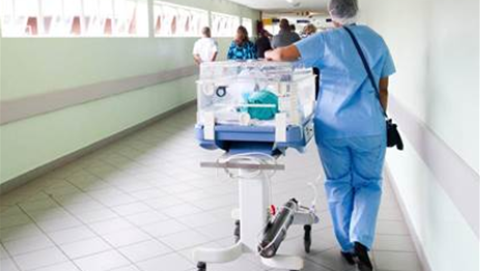Vodafone Hutchison Australia and Optus have shed new light on their respective trials of Long Term Evolution (LTE) mobile broadband technology in the 1800 MHz spectrum band.

A number of Australian telcos held spectrum in the 1800 MHz band, mostly for "GSM capacity offload", according to networking vendors.
Ericsson A/NZ strategic marketing manager Warren Chaisatien told iTnews yesterday that some operators might "re-farm and reuse existing 2G and 3G spectrum" – such as 1800 MHz and 2100 MHz - for LTE deployments "towards the end of 2012 or 2013".
Telstra has trialled LTE kit in the 1800 MHz spectrum.
Vodafone Hutchison Australia (VHA) revealed its own trial in October which used 10 MHz of spectrum in the 1800 MHz band. Both telcos used Huawei kit.
But Optus was a new addition to the 1800 MHz trial set. It previously conducted the first phase of its LTE trials in Sydney in the 2100 MHz band using 10 MHz of paired spectrum.
VHA trial
News of VHA's LTE trial was overshadowed at the time by the announcement of a major expansion of its existing 3G network.
The trial occurred near Newcastle, north of Sydney, achieving a maximum downlink speed of 74.3 Mbps and an "average uplink throughput of 5.6 Mbps".
iTnews can now also reveal that the test involved three mobile towers and "focused on speed, latency and coverage".
"VHA is currently planning further trials [that] will involve formal engineering test cases and detailed performance measurement both in the lab and in the field, including inter-system handover with 3G and self organising network (SON) functionality," a spokesman for the telco told iTnews.
SON systems automated the management of LTE networks, optimising network coverage, capacity, cell size and so on according to variables like signal strength and traffic.
"We'll be reviewing LTE as part of our longer term plans," the spokesman said.
"1800 [MHz] LTE is a potential option for VHA in the future. Globally, there are already other [operator] precedents in the same band."
New Optus trial
Optus has kicked off phase two of its LTE trials in Sydney.
The carrier was participating in a wider LTE trial run by parent SingTel, where each region would test out a different vendor's kit. Optus was using equipment from Nokia-Siemens Networks (NSN).
Phase one of its trial network – which consisted of two base stations at Gordon and Pymble on Sydney's leafy north shore – achieved maximum peak downlink speeds of 73 Mbps in the labs and "in excess of 50 Mbps" in drive tests.
The first phase tested download and upload speeds, ping times and basic handover between the two LTE base stations.
Full load testing and 2G/3G/LTE interoperability was to be tested in the second trial phase, which was now underway.
Optus' director of mobile networks Andrew Smith told iTnews that the phase two trial would run over a "wider operational area".
"We are expanding the pilot trial area to Sydney's Eastern Suburbs with a dozen sites in the 1800 MHz band," Smith said.
Telstra's view
Telstra's Wireless networks and access technologies executive director Mike Wright told iTnews yesterday that its trials in the 1800 MHz band proved it a "viable spectrum for LTE to operate in.
"But the other question to be answered is how mainstream the adoption of that band will be," Wright said. "We're not big enough in Australia to set worldwide trends [for spectrum use]."
Read on to page two to find out the carriers' plans for moving to LTE and how long they will sweat existing HSPA+ assets.
With all three of Australia's mobile telcos trialling LTE, the big question is when – or if – they will consider a commercial deployment of the technology.
Spectrum and device availability were key concerns raised by all three telcos in iTnews' investigation.
But there was also an emphasis on sweating existing HSPA assets before they started moving across to LTE.
"Optus has not yet made a decision on when it would roll out commercial LTE services," Smith said. "A major consideration is when LTE devices become widely available in the appropriate spectrum band."
Most telco and vendor representatives believed HSPA would have a place in the LTE future, something that was supported by overseas business models.
For example, TeliaSonera offered dual-mode dongles that that allowed users to experience LTE speeds in coverage areas, but fell back to the 3G network when they moved outside of an LTE coverage zone, according to Ericsson's Chaisatien.
The dual-mode product cost about $55 a month for 20 GB of data at peak speeds of 16 Mbps.
By contrast, TeliaSonera's full LTE service offered 30GB of data for about $90 a month at peak speeds of 80 to 100 Mbps. The service would be available in 28 cities by the end of the year and 228 cities by the end of 2011, Chaisatien said.
Similarly, Verizon's "4G LTE" network used dongles that were backwards-compatible with its existing EV-DO 3G network.
Optus' Smith told iTnews that HSPA/HSPA+ had "a long future [yet] in supporting mobile and wireless broadband services".
"LTE will be complementary to HSPA, providing more capacity and higher data rates," he said.
Likewise, VHA's spokesman told iTnews: "HSPA+ has unrealised potential for VHA".
"Until such time as LTE is ubiquitous, HSPA+ will have a place, especially in low-band spectrum including the 850 and 900 [MHz] bands," the spokesman said.
And Telstra's Wright said there was a "fair bit of gas left in the HSPA tank" when it came to Next G. He said that any decision to go down the LTE path would be balanced against device availability volumes, the amount of capital investment required, demand analysis and Telstra's understanding of "what the rest of the world was doing" in deploying LTE in different spectrum bands.
The vendors also agreed there was a "lot of life" left in HSPA networks.
"Capacity improvements will continue in parallel with LTE development and rollouts," Huawei wireless solutions manager Terry Walsh said.
"Most operators will have to look at a break point where they switch across [to LTE] or continue to evolve their HSPA networks".
It was unclear where that break point would be. Ericsson was another vendor known to have been actively discussing with carriers how to sweat their HSPA assets.
Ericsson's Chaisatien expected LTE to become "the mass market dominant [wireless broadband] technology in the next 4-5 years", based on carriers' previous experiences with HSPA rollout.
Upgrade path
Part of managing any transition from HSPA to LTE was understanding the nature of upgrades that were required.
Several vendors touted systems they said enabled telcos to perform mostly soft upgrades to their networks to take advantage of LTE.
Huawei said its Single RAN solution required a soft upgrade to the radio unit and a card upgrade in the baseband unit.
Ericsson A/NZ strategic marketing manager Kursten Leins said that users of its "latest generation of radio equipment" could similarly "effectively reuse the majority of their equipment."
"It's effectively a software upgrade," he said.
Users of earlier GSM and 3G base station technology would need to perform both hardware and software upgrades, he said.
Vividwireless chief Martin Mercer told iTnews his company's trial of Huawei kit was partially aimed at testing the software upgradeability claims.
"We're testing Huawei's promises that they are software upgradeable [from WiMAX] to TD-LTE," he said.
Stay tuned for part three of iTnews' LTE investigation on Wednesday where we will examine the TDD flavour of LTE.



.png&h=140&w=231&c=1&s=0)





.png&w=100&c=1&s=0)

 Digital Leadership Day Federal
Digital Leadership Day Federal
 Government Cyber Security Showcase Federal
Government Cyber Security Showcase Federal
 Government Innovation Showcase Federal
Government Innovation Showcase Federal
 Digital NSW 2025 Showcase
Digital NSW 2025 Showcase












_(1).jpg&h=140&w=231&c=1&s=0)



